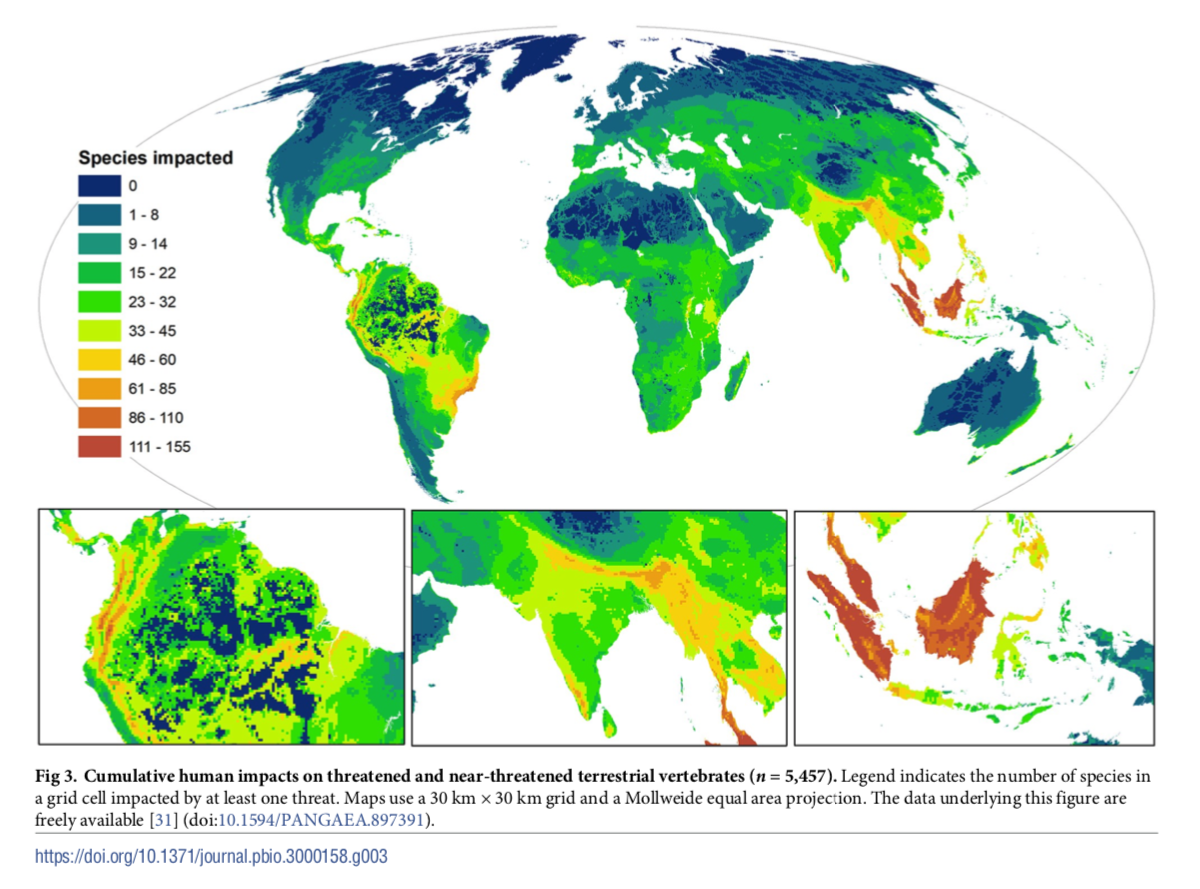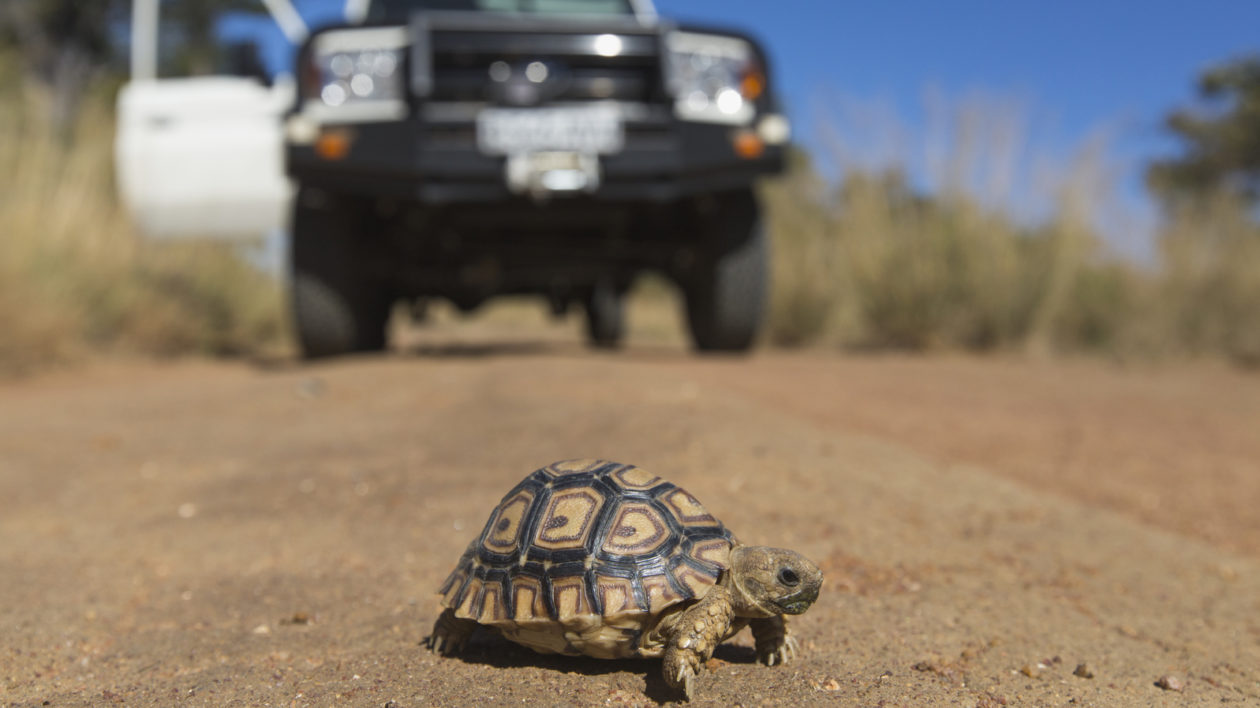A new analysis identifies global hotspots where species are most threatened by human activity, providing a guide for conservationists to better protect wildlife by maximizing their effort and investment.
The Gist
Scientists have a good understanding of how human activity harms species. And a great deal of research has gone into mapping the extent of human influence on the Earth’s surface. But until now, the two had not been combined in an effective way.
“Previous research just overlaid threat maps and species ranges, but that doesn’t tell us how much of a species’ range is actually impacted by those threats,” says James Allan, a conservation scientist at the University of Queensland and lead author on the research.
The problem is that not every species is sensitive to every threat. Roads might harm amphibians, but have little impact on migratory birds. Poaching might severely threaten a particular mammal, while leaving other species unaffected.
Allan and his collaborators identified the human-caused threats that actually harm a species, and then mapped those threats only where they occur in that animal’s range. They repeated the process for 5,457 terrestrial vertebrates, building a global hotspot map of where species are most threatened by human activity.
They discovered that impacts to species are widespread, occurring across 84 percent of Earth’s surface. More than 1,200 species are impacted across greater than 90 percent of their range, while nearly 400 species are facing threats across their entire their range.
“These species have no space to hide,” says Allan. “They are being persecuted by people across their entire range, and their extinction is inevitable without conservation intervention.”

The Big Picture
Allan’s research is not the first to sound the alarm for threatened species. Scientists have long observed that the current rate of species extinction is tens to hundreds of times higher than normal levels — and that human activity is the culprit. Hunting, harvesting, industrial activity, and the conversion of natural habitats for agriculture or urbanization are all laying waste to biodiversity.
A recent United Nations report concluded that 1 million plant and animal species face extinction — due to human activity — unless conservation efforts escalate rapidly. Many of those extinctions will occur within decades, and the overall rate of extinction will accelerate rapidly without further action.

The Takeaway
With limited time and resources to save these species, conservationists must maximize their return on investment. “Our hotspot data can work out where an intervention will give you the biggest bang for your buck,” says Allan.
These results also pinpoint the most important refugia for threatened species, where conservationists can focus their efforts to prevent threats from taking hold. “For example, whatever way you slice and dice the data, the forests of Borneo are one of those places,” says Hugh Possingham, chief scientist at The Nature Conservancy and co-author on the research. “Nowhere else in the world is there such a high concentration of threatened animals in a place where there is still time to protect largely intact ecosystems.”
Beyond conservation, Allan’s analysis can also help the development sector better understand how their work in high-biodiversity areas impacts threatened species. “I want them to use this tool to think through the impacts of different development projects on species,” says Allan. “If the development community is really committed to achieving the Sustainable Development Goals, this is a crucial piece of conservation data they have been missing.”
References:
Allan, J.R, et al. (2019). Hotspots of human impact on threatened terrestrial vertebrates. PLOS Biology, 17(3): e3000158. https://doi.org/10.1371/journal.pbio.3000158




Hopefully Jeff Bezos will help with conservation of Borneo forests.